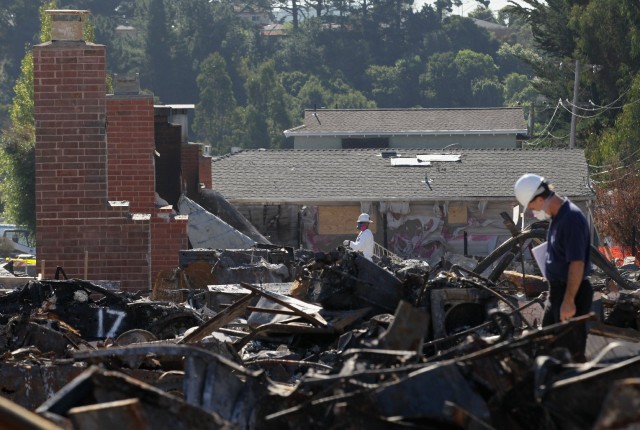
Pacific Gas & Electric Co. indicated it expects to face criminal charges for its role in the September 2010 pipeline blast in San Bruno that killed eight people, injured dozens more and destroyed 38 homes.
PG&E Corp. and its subsidiary filed a disclosure document today with the Securities and Exchange Commission saying that it is anticipating these charges. It also reported that it has been negotiating with the U.S. Attorney's Office in an attempt to resolve the federal investigation of the blast, which occurred on the early evening of Sept. 9, 2010, and engulfed the residential Crestmoor neighborhood in flames.
Despite the ongoing discussions, PG&E said it believes the U.S. Attorney will charge that the utility's past operating practices violated the federal Pipeline Safety Act in such areas as pipeline integrity management, recordkeeping and identification of pipeline threats.
PG&E Chairman and CEO Tony Earley, who was brought in to lead PG&E in 2011 after the San Bruno accident, said in a statement:
"San Bruno was a tragic accident that caused a great deal of pain for many people. We’re accountable for that and make no excuses. Most of all, we are deeply sorry. We have worked hard to do the right thing for victims, their families and the community, and we will continue to do so. We’ve learned the tragic lesson of San Bruno that safety must always come first. Toward this end, we’ve implemented enormous change here at PG&E. We’re working to transform this 100-plus-year-old natural gas system into the safest and most reliable in America. In support of this, we’ve committed $2.7 billion of shareholders’ money to date and we’re making excellent operational progress. We have more work to do and we intend to do it right.”
PG&E said it believes that criminal charges are not merited and that PG&E employees did not intentionally violate the federal Pipeline Safety Act.